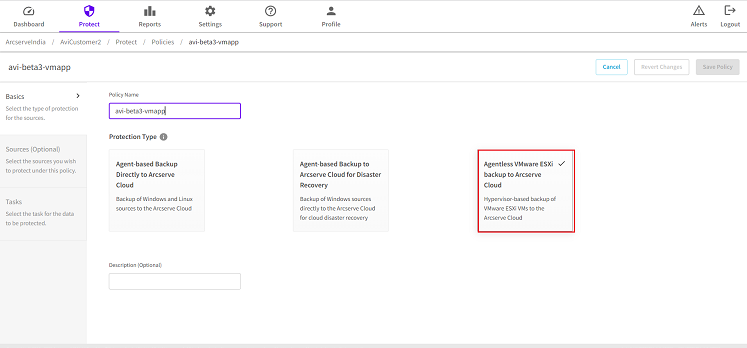Configure Arcserve Cloud Direct Virtual Appliance
You can configure a virtual appliance after completion of registration to the Console. To configure, you must add the virtual machines as a source. For more information, see Add a source. Then, you can configure the settings as required.
Follow these steps:
- Navigate to Settings > Infrastructure > Hypervisors, click name of the desired Virtual Appliance or from Protect > Policies, modify the Appliance policy.
- Click the Tasks tab and perform the following steps:
- From the Where to protect, specify the desired destination where you want to store the data.
- From the When to protect tab, assign a backup schedule to run.
- From the Additional Settings” tab, you can add/update the information of the following fields and click Save:
The virtual appliance policy modification page is displayed.

Note: You can also add a Throttle Schedule to restrict bandwidth usage.
If you select a Disaster Recovery destination, recovered resources are created for all added sources in the policy.
Data Center / Host
Default set to None. When a value is set, only virtual machines from this Data Center / Host is protected.
Note: Verify that VMs outside are already disabled.
Name
Refers to the System name provided during registration. You can modify if required.
Cache Location
Enter the location where the cache is stored. The Cache Location locally stores cache to optimize transfer performance. It roughly totals 1% of the data set. If free disk space is a concern, provide an alternate location for the cache.
Pre-backup Script
Enter the location of the script that executes before the backup job runs and to stop the backup when script fails, check the Stop backup if the script fails (Optional) checkbox
Post-backup Script
Enter the location of the script that executes after the backup is completed.
Auto-upgrade agent
Refers to the agent. Enabled by default, lets you automatically upgrade the agent in Virtual Appliance.
Auto-sync new VMs
Lets you sync the VMs from vCenter daily. The option is disabled by default. To manually sync the VMs, you can click Refresh VMs now.
The configuration of virtual appliance is complete.